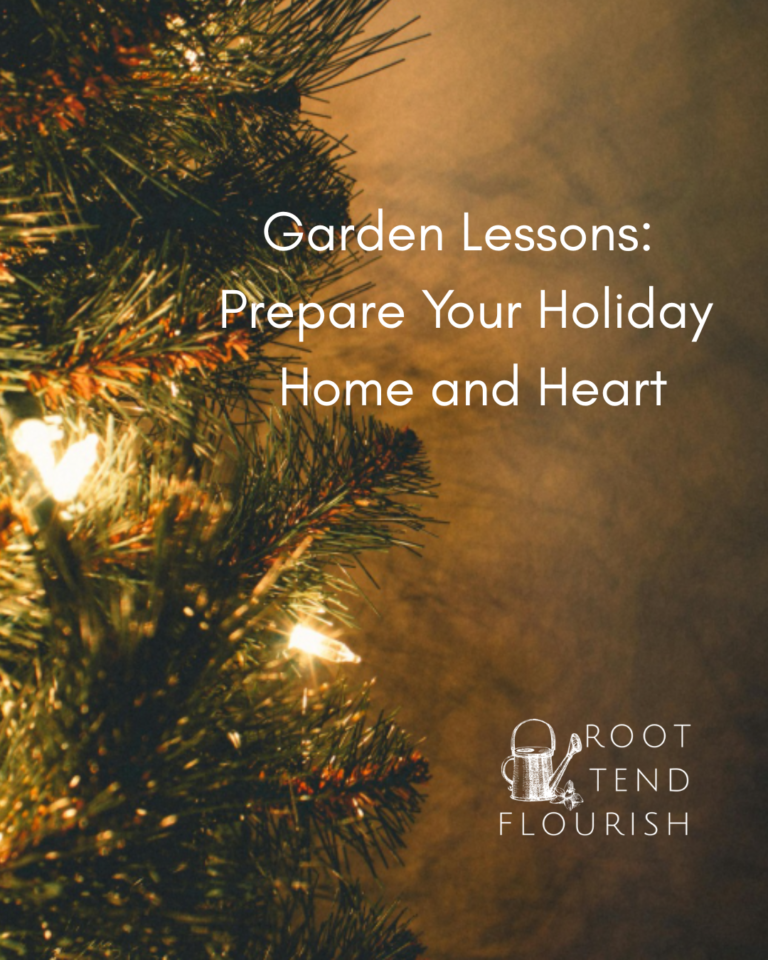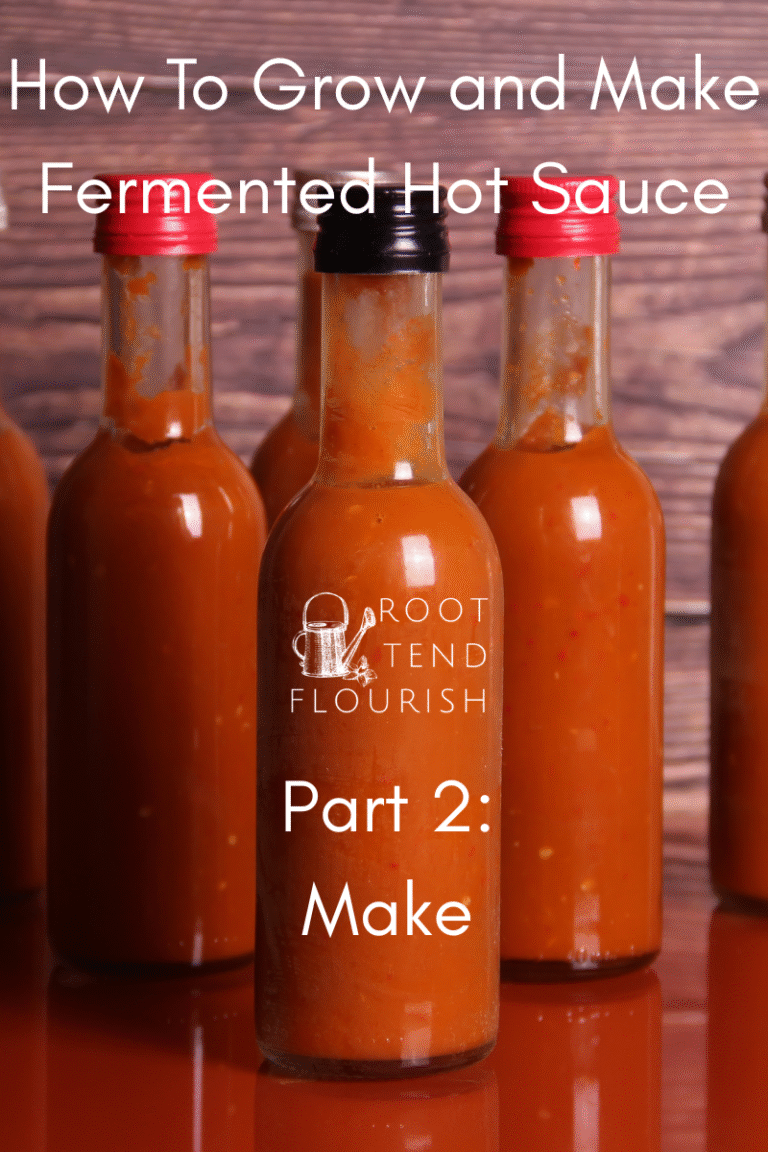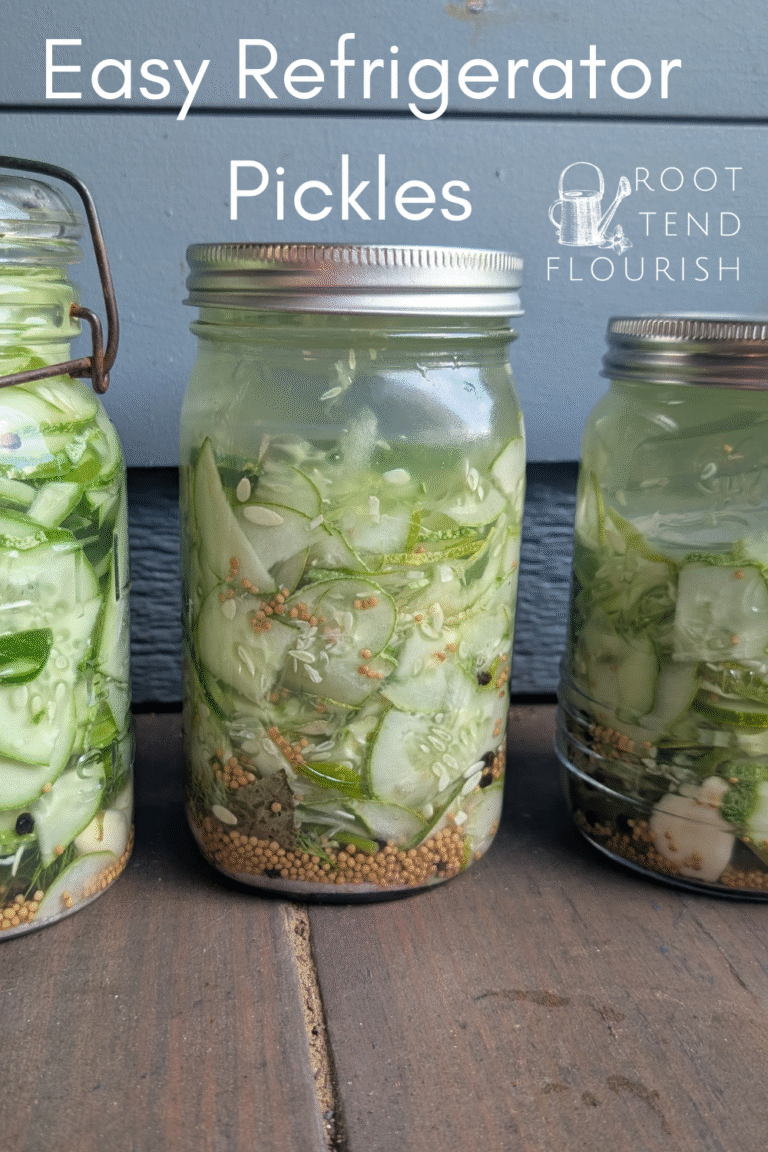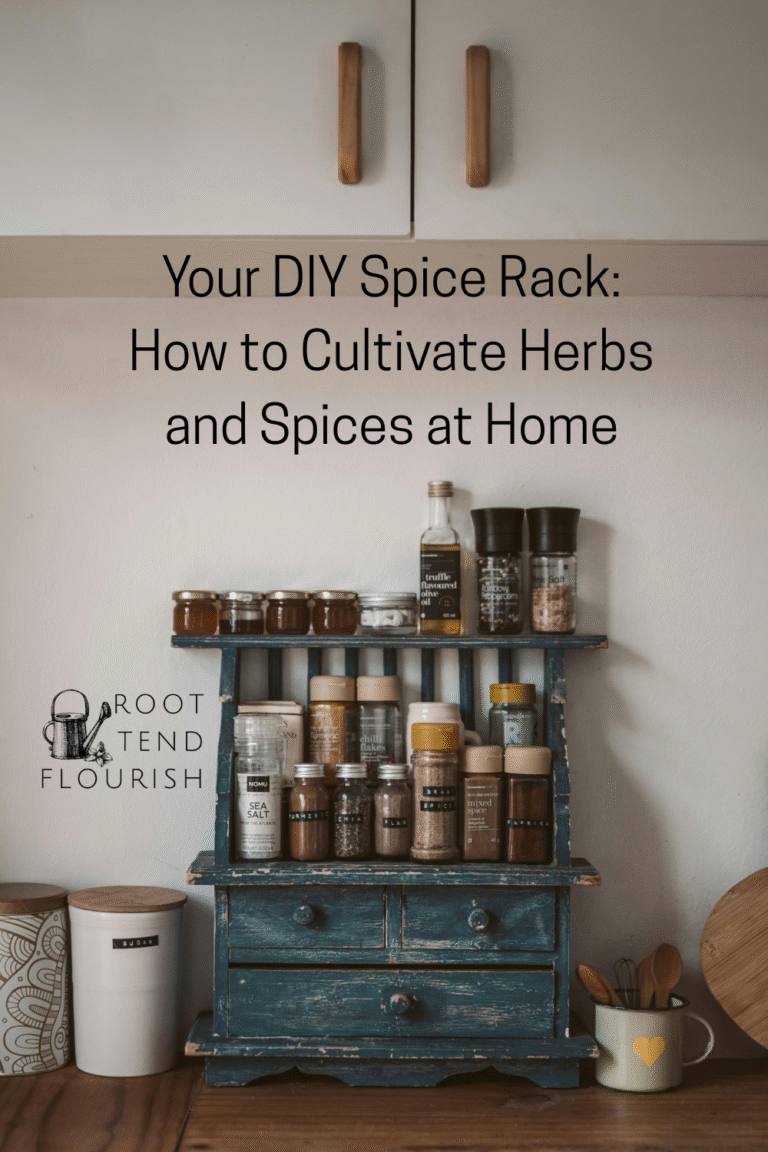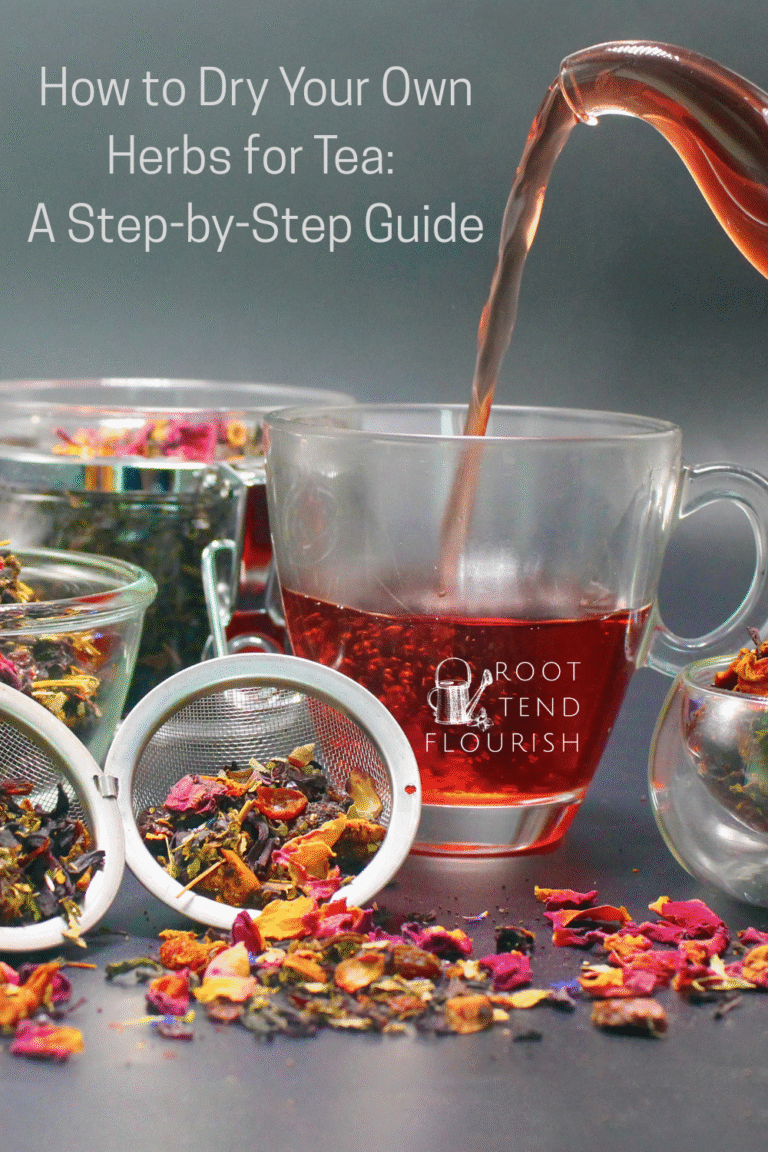How To Make Fermented Hot Sauce (Part 1)
Growing Hot Sauce Where You’re At
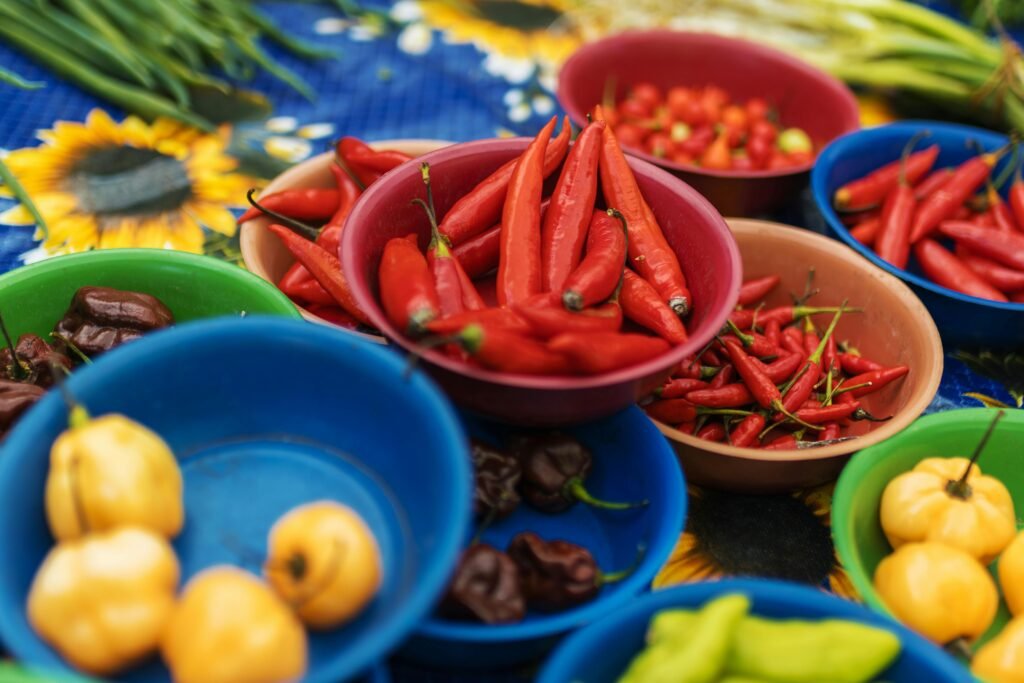
I like hot sauce but, well…. my husband loves hot sauce. Like really loves it and seeks out all different kinds. Along with consuming it, he’s pretty talented at making it, so I thought I would let him write this week’s post. Therefore, a quick introduction to my wonderful husband, Mike. When he isn’t immersed in the world of financial education, Mike cherishes quality time with his loving wife (me!) and our three wonderful, crazy children. He finds joy in activities such as watching movies, brewing beer for the last 12 years, playing the bass guitar for churches and Battle of the Bands at his office, and indulging his creative side by crafting various projects with his hands. Most of the time though it’s fermenting something on the counter. And now Mike…
Thanks for the introduction and it’s true I love hot sauce. Each year I try to make it hotter than the previous batch. One of the best things about moving to Middle Tennessee is that I have a much longer growing season, which means I can have a greater choice in what peppers I choose to grow to make my hot sauce. Some peppers take 5 months to grow and that just wasn’t possible in our previous garden in Western Massachusetts.
Cold Climate Fermented Hot Sauce (It’s a little wimpy)
In our former gardens, I had to have starter plants that were well on their way in being prepared for planting. The pepper plants I would go with up north were Habaneros, Thai Chile, Jalapeno and of course some Sweet Bell peppers. These were mainly chosen because they generally have a shorter number of days to harvest than other peppers. Some years they would grow well and other’s…well we had some good grocery stores and farmer markets to get what I needed if the garden didn’t pan out as planned. I always still had solid, fresh ingredients for my annual batch of hot sauce.
The key to great hot sauce is all about the peppers. So I am going to stop waxing poetic and get down to what you need to have a thriving garden full of peppers to eventually turn into hot sauce.
What Hot Sauce Peppers Need to Thrive
The first thing we are going to look at is what hot peppers need for ideal growing conditions which, in turn, equals amazing hot sauce.
1. Warm Soil
Peppers love heat! Middle Tennessee, where I call home, has a climate that works well, but early spring can be unpredictable with a lot of rain. If you are starting your own seed, plan to start the seeds indoors around 8–10 weeks before the last frost and transplant outdoors once soil temps stay above 65°F. Everything that I have read about growing peppers is that you need a warm climate that averages everybody’s perfect temperatures between 70 to 85°F. While having great average temps like the ones listed above it’s more important to make sure the temperature doesn’t drop too low like under 55°F. If temperatures drop too low, plants may become stunted or fail to produce fruit.
2. Full Sun
For optimal growth, these peppers need at least 6 hours of direct sunlight but longer sun really is best. If you’re really far south, aim for morning sun because the afternoon sun can be pretty strong on tender plants.
3. Well-Draining Soil
Peppers love just enough water but not too much. No wet feet please. In my yard, we have heavy soil that is mostly clay, which can be tricky to grow in. If you are planting in the ground (more on that later) you will need to improve drainage since clay is not great for drainage. One way you can do that is to mix in compost, aged manure, or even some sand to lighten the soil.
4. Proper Watering
Consistent watering throughout the growing season is critical for healthy plants. From what I have read (and of course what I asked Kristin), you’ll want to aim for deep watering once or twice a week, letting soil dry slightly between. Overwatering can cause root rot, while inconsistent watering leads to bitter peppers. Both are not good options so have a watering plan in place before you plant those peppers.
5. Fertilization & Soil Amendments
One of the things I love about peppers is that they aren’t too demanding. Not only do you only need to deeply water 1 to 2 times per week, they’re not overlay picky with soil nutrients. If you do find that your soil is lacking some basic nutrients, consider these additions below:
- Add bone meal or Epsom salt to add calcium and magnesium.
- Use a balanced vegetable fertilizer (low nitrogen, higher phosphorus) to encourage fruiting.
- Mulch with straw or wood chips to retain moisture and prevent weeds.
While I don’t know necessarily how each of these nutrients help my peppers, I do know that I trust my wife’s advice. She can point me in the right direction and make sure that I am giving my peppers exactly what they need.
6. Support & Spacing
The last thing I want to mention is that many peppers will need some sort of support as they grow. Depending on which pepper’s you choose, you will want to stake them to help them grow well. This keeps the peppers off the ground, which can lead to rotting and pest issues. Proper spacing is also important for healthy peppers. Most peppers should be planted 12-18 inches apart which, having grown many varieties over the year, I can say is an accurate statement. This will allow them to get the air they need, space to grow and not crowd each other.
7. Mulch
This past year I saw the benefits of using mulch in the garden with the peppers, since I had my best growing season ever! (It also helps that it was a particularly hot, dry summer). I learned that mulch is key in helping prevent those dannabit weeds! Kristin also said that mulch helps retain moisture and helps keep the temperature not too high and not too low.
Where to Plant Hot Sauce Peppers
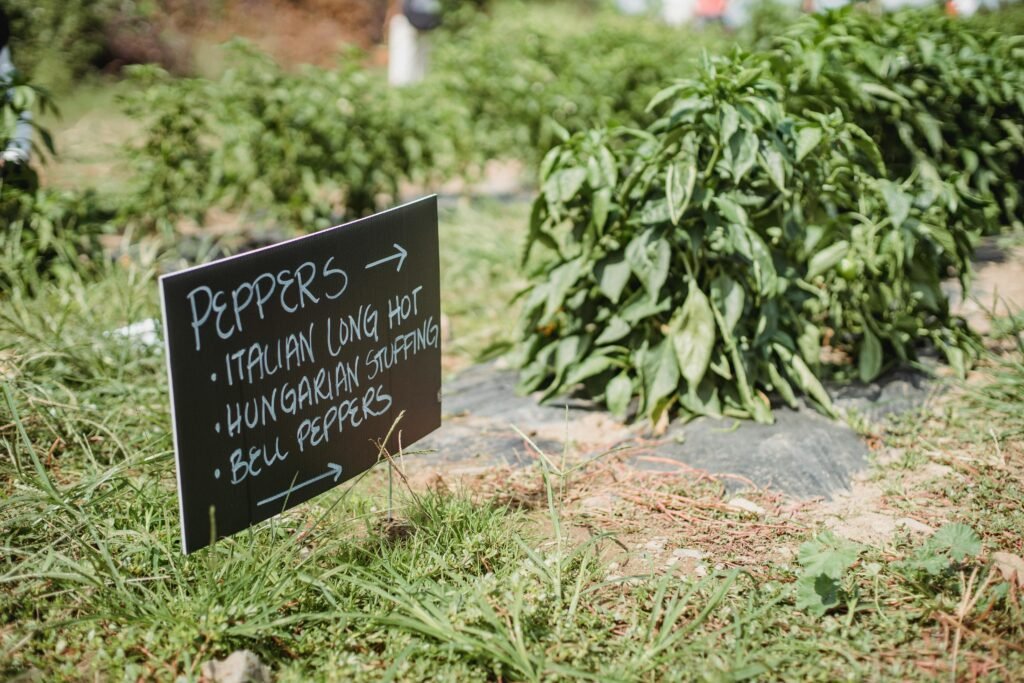
Last year, we moved to Middle Tennessee and let me tell you what, with a little effort I was able to grow some really great peppers, even in less than ideal soil. A key to growing great peppers is a hot, dry season with good quality soil. Fortunately, raised beds and pots can help with that. If your local climate fits the bill for hot peppers (hot, somewhat dry, long growing season) then the first thing you should consider is where they are planted. Here are a few suggestions
- Raised Beds – This is a great way to control the quality of soil. A raised bed can have ideal nutrients based on what you amend the soil with. You can also ensure loose, aerated soil since it’s not getting tilled or walked on like traditional garden beds. and then you can also ensure a better aeration with the soil because the soil is controlled. We’re going this route this season with some brand new raised beds since our native soil is heavy clay.
- Container Gardening – Peppers also do exceptionally well in pots. The general suggestion is a 5 gallon container with good drainage to allow roots to expand. Along with space in raised beds, this is probably the approach I will be taking this year, since we just moved into a new house. Containers are easy to manage and as we get to know the sun patterns at this house, we’ll be able to move them easily. If you have small spaces or a really sunny patio, this might be the way to go for you too.
- Traditional Inground Gardens – If your soil is loose and fertile, you can plant peppers directly in your garden. Just look out for areas that collect rainwater and or really heavy soils.
How To Choose Your Peppers Varieties
The best peppers for your particular hot sauce really depend on how hot you like it. I like to have a variety of peppers to make into hot sauce; some hot and some not so much. There are hundred’’s of varieties out there, but here a few of my favorites and their main features:
- Jalapeño: A resilient, easy to grow option that thrives even in unpredictable weather. Offers mild heat with grassy undertones.
- Cayenne: Adaptable and productive, cayenne peppers love hot summers and produce abundantly. Great for drying and fermenting.
- Habanero: A longer growing variety, habaneros need extra heat and a long season but flourish with proper care. Their fruity fire adds depth to sauces.
- Thai Chili: Small but mighty, these peppers handle hot, humid conditions well and pack serious spice.
- Poblano: A versatile pepper that grows well in the Southeast, it offers mild heat perfect for smoky flavors.
- Ghost Pepper: Needs a long season but can succeed with warm nights and steady watering. Ferments beautifully for complex heat.
- Scotch Bonnet: Similar to habanero, these peppers bring tropical heat and thrive in well draining, rich soil.
- Serrano: Produces heavily in hot and humid climates, making it a great all purpose pepper.
- Cherry Bomb: It’s a hybrid variety of Capsicum annuum, developed in the United States for its sweet flavor, mild heat, and early maturity.
- Carolina Reaper: Previously known as the hottest pepper, the Carolina Reaper is famous for its fruity flavor and intense heat. It’s still widely grown and used in spicy dishes.
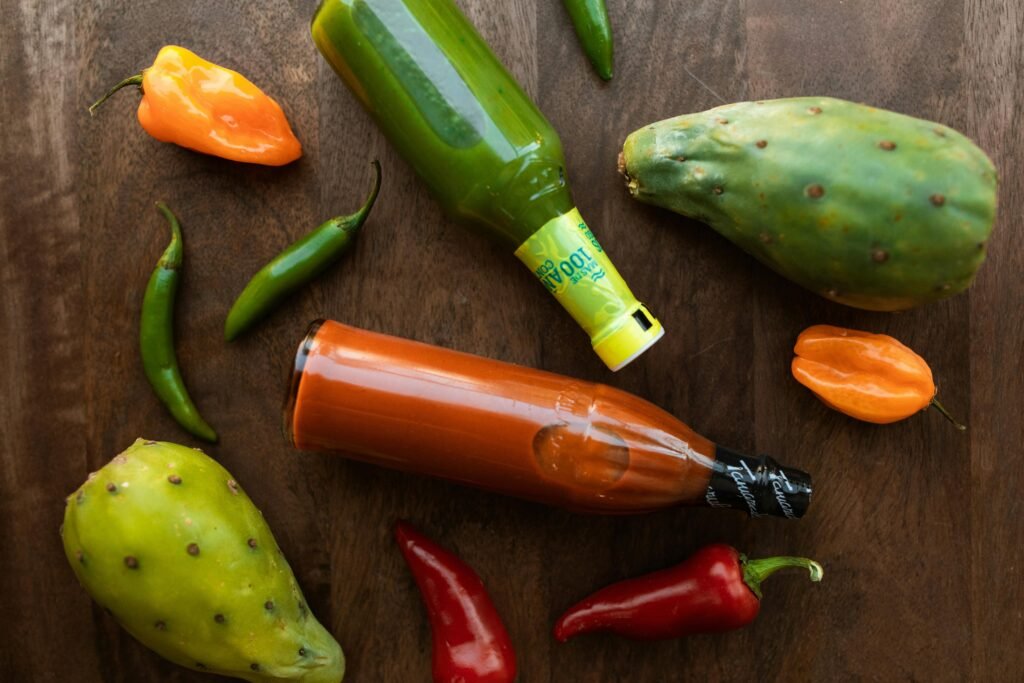
Come back next week to discover the next step in your hot pepper journey—because growing them is just half the battle. We’ll dive into harvesting and a surprisingly simple, hands-off process of making a fermenting hot sauce.
That’s my hot take, what’s your spicy take? Have you dived into the world of fermented hot sauce, or do you prefer the bold bite of vinegar-based varieties? Let’s hear it in the comments below! (And yes, I do sound that spicy talking about hot sauce.)

